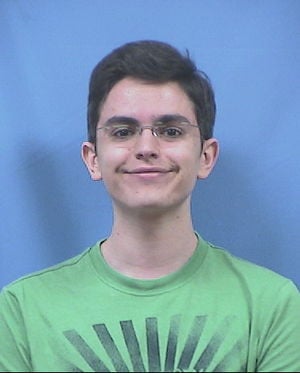
My name is Alan Freeman. I am currently a sophomore at Principia College. I am working on getting my Bachelor of Science in Computer Science. I would like to go into video game development, but am open to other options. If you want to talk to me for any reason, my school email is alan.freeman@principia.edu
The Open Source Movement[edit | edit source]
To me, the Open Source Movement is the next step in the evolution of information exchange. Throughout the history of humanity, new technologies, like the printing press and telegram have improved people's ability to communicate over long distances. The Open Source Movement is a product of the internet and its ability to let people send and receive information almost instantly. Not only that, but information is easier to find on the internet. Thus, it is possible for two people on opposite sides of the planet to build off of each other's work. What I like about the Open Source Movement is its almost endless potential for growth and evolution. It is adaptable to new technologies and allows many people to build off of others' designs and improve them. In this way, it also allows for greater creativity. I could get someone's 3D print design online and make changes to it. The history of technology has been building off of past inventions, and the Open Source Movement allows that to happen more efficiently. It's all these reasons (plus the fact that open source things tend to be free) that I enjoy Open Source. My time building a Jellybox printer was part of the Open Source Movement because the Jellybox itself is open source, and by building and using one, I can give back to the Open Source community by sharing my knowledge and experience to others interested in delving into 3D printing and using a Jellybox. I don't know how much I will keep working with 3D printing after I finish school, but if I stick with it, I could see myself messing with designs to see what I could make and possibly improve on existing designs.
Demo Stuff[edit | edit source]
Videos[edit | edit source]
| jellybox print |
|---|
My Projects[edit | edit source]
| The Houses | |
|---|---|
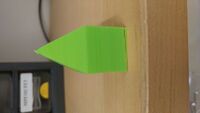
|
This was my very first print! It came out pretty well but had a problem. When the print finished, the house was stuck to the printing bed. It took quite a bit of force to pull off, which damaged the print. Hence the little-jagged line at the bottom layers. |
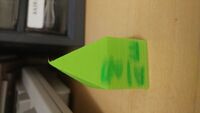
|
After adjusting my z-probe's offset, I reprinted the little house. This time, the house wasn't wedged to the printing bed and came out looking pretty good! |
| Tensile Tester | |
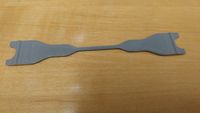
|
The purpose of this funny little thing is to test the tensile strength of the filament being used. I have yet to use it, but it looks like a giant nasal strip. |
| Rock Climbing Grip | |
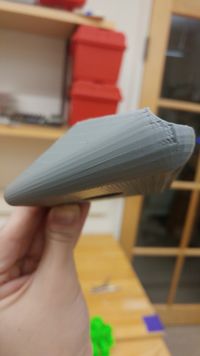
|
This is my design for a rock climbing grip. The print came out well, minus some little rough spots on the back, but those are just fragments of the supports that kept the design upright while printing. If I wanted to perfect the design, all I would have to do is play with some numbers in OpenSCAD. Overall, I'm happy with the result! |
| Mashup Project | |
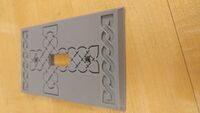
|
This is a light switch plate I created with Celtic designs. As with any print, there are some minor imperfections. The circular holes are for the screws, but they are a bit small and slightly too high. The plate warped a little bit too, but this it's not significant. Despite these flaws, I'm proud of how the final product turned out! The Celtic designs look really good and there are no major flaws. To make my plate, I simply hulled two cubes to get the right shape, used the difference function to make two holes for the screws and spot where the switch would go, then added some Celtic designs to the plate. I would not have been able to complete this assignment without the work of Mark Hindess. He created a library of Celtic knots and segments usable in OpenSCAD, which I used to design my switch plate. Thank you for your designs, Mark!
Click here [1] to see Mark's Celtic Knots. |
| OSH Project | |
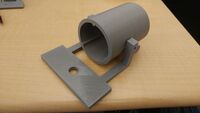
|
This was my difficult project up to this point in the semester. For this assignment, we had to make practical tools for the college's science professors. I asked my Computer Science advisor if he had anything he needed. He does a lot of bird watching, so he asked if I could make a stabilizer. This stabilizer is meant to keep his camera lens aligned to his telescope's lens and lock it in place as long as needed. The tube is meant to go over the telescope, and then the platform, with the camera on it, would be locked onto the tube with pins. Getting this project to work properly was difficult, mainly because the measurements needed to be very precise for everything to fit properly. |
| OSAT Project | |
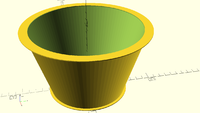
|
